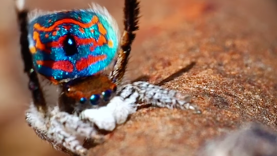

Park rangers at Saguaro National Park are warning visitors about possible rabies cases. An official press release says there have been several deceased foxes, reports of “strange wildlife behavior,” and at least one incident of a bobcat biting a visitor. Anyone who has come into contact with an animal at the Arizona park should report it to park officials and seek medical attention.
Videos by Outdoors with Bear Grylls
Despite reports of dead animals, wildlife officials have not recovered any carcasses to test for the disease. Unfortunately, rabies can only be detected in a deceased animal, since medical officials need to analyze the animal’s brain. Without one to test, Saguaro officials can not confirm an increase in rabies cases.
Understanding Rabies
According to the CDC, rabies often makes animals act aggressively and will kill most animals within a week. The disease spreads through saliva, which can be present in bites or even scratches. Here is the typical process of the virus:
- An animal is bitten by a rabid animal.
- Rabies virus from the infected saliva enters the wound.
- Rabies virus travels through the nerves to the spinal cord and brain. This process can last approximately 3 to 12 weeks. The animal has no signs of illness during this time.
- When it reaches the brain, the virus multiplies rapidly and passes to the salivary glands. The animal begins to show signs of the disease.
- The infected animal usually dies within seven days of becoming sick.
In humans, the disease can be treated given proper medical care soon after exposure. If not treated promptly, it is often fatal.
As always, visitors to national parks should keep a safe distance from wildlife. Pet owners should ensure their pets are vaccinated against rabies. Owners should keep all pets on a six-foot leash. Visitors should report any signs of animals acting bizarrely to Saguaro National Park officials.









